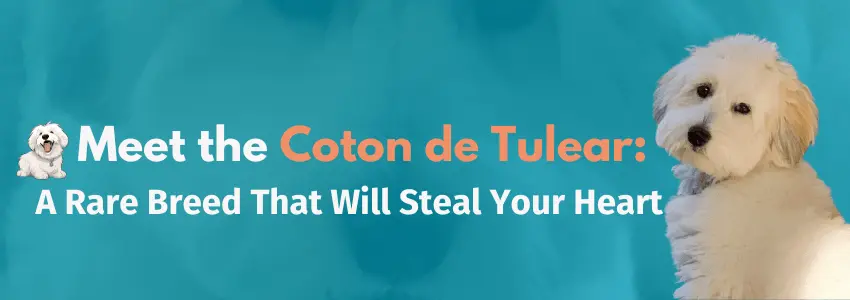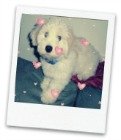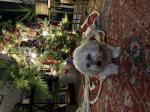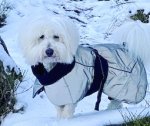Grooming an Anxious Dog
Tips and Tricks for a Calmer Pup
Grooming an anxious dog can be a challenging experience, but you're not alone. Whether you're a seasoned dog owner or a newcomer, there's always room to make grooming a better experience for you and your Coton de Tulear.
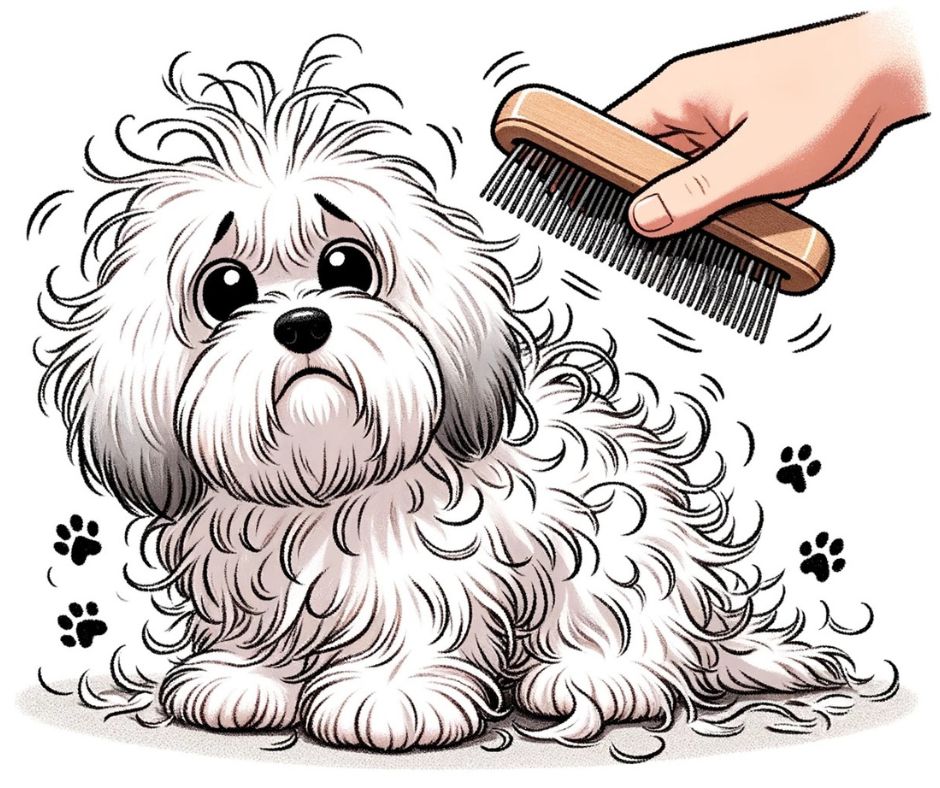
I don’t know if grooming an anxious dog is harder on you or the dog. But there’s no reason that either of you have to suffer.
Here are some tips to make grooming a positive experience for you AND your dog. Happy dog equals happy pet owner!
How to Groom an Anxious Dog at Home
Age Matters: Puppies vs Older Dogs
It's always a good idea to start grooming your dog as early as possible. It’s much easier when your dog is just a puppy, and you can gradually show him that grooming can be a good experience.
Older dogs are a little more difficult because they’ve either had a traumatic experience or developed bad habits.
Mental Preparation: Calm Owner, Calm Dog
Cotons are extremely sensitive to your emotions. If you're tense, your dog will pick up on it. Take a deep breath; it's okay. Even if a grooming mistake turns your Coton into a poodle lookalike, remember, hair grows back!
I think most of us can remember at least one bad Coton haircut. It can be jarring, especially if your dog has to be shaved due to excessive matting. But it will grow back!!!
Preparation: Setting the Stage for Success
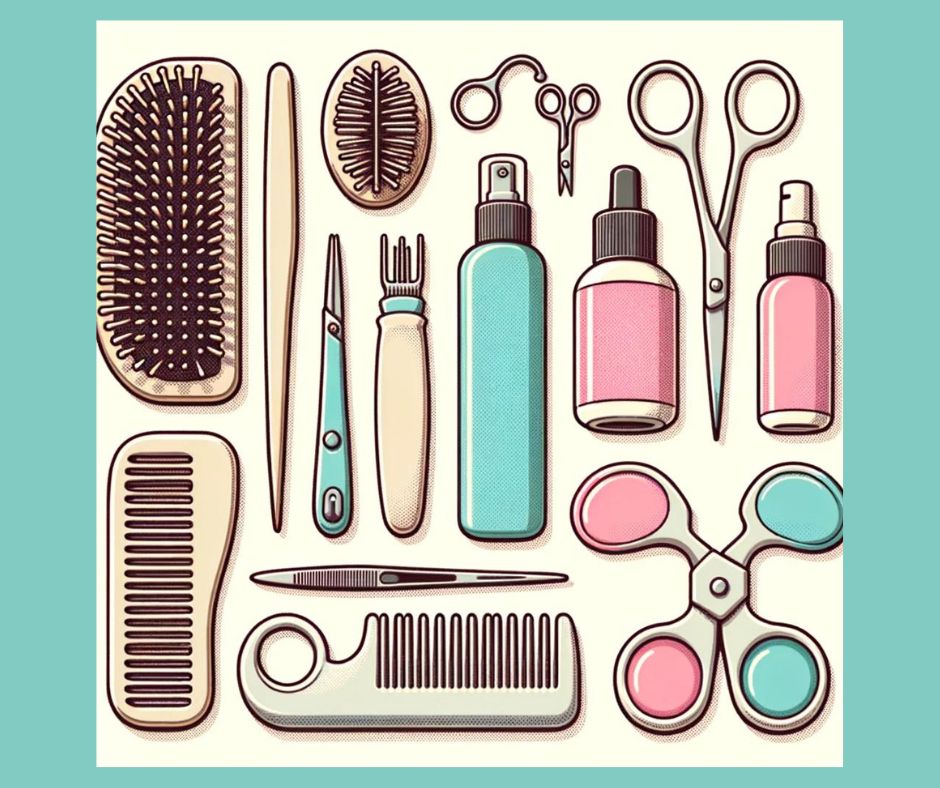
- Schedule the grooming session when your dog is relaxed and calm. Avoid scheduling the session when your dog is anxious or stressed, such as after a meal or a walk. It's not a great idea to tackle dog grooming with a tired dog either.
- Choose a quiet and comfortable location for the grooming session. Avoid noisy or busy areas that can distract your dog and make them anxious.
- Gather all the necessary grooming tools, such as brushes, combs, scissors, and clippers. Make sure the tools are clean and in good condition.
- Expose your dog to the various tools you'll be using. Let him spend time on the grooming table with a treat or a toy.
- If you're having trouble managing your dog's fear, consider getting your veterinarian's guidance or consult with a professional dog groomer for advice on making the grooming experience less stressful.
Creating a Calming Environment
The atmosphere matters. Tips to help you set a calming mood for your dog include:
- Play soothing music
- Consider using calming aids, such as pheromone sprays or scents such as lavender, to help your dog relax during grooming.
- Provide a comfortable, cozy space with familiar items like blankets and toys.
- Take baby steps. Introduce grooming in a phased manner, starting with shorter grooming sessions and building up as your dog becomes more comfortable.
- Keep necessary items within arm’s reach for bathing.
- Incorporate positive reinforcement. Reward your dog with treats, toys, or praise during grooming. If your dog becomes stressed, pause and resume when calmer. Creating a positive grooming association is key to a long-term stress-free experience.
- Understand that gentle and slow wins the race. Be patient and observe your dog’s comfort level.
- Thoroughly dry your dog, since post-grooming care is important. This is also a good time to inspect for skin irritations and praise your pup for a job well done.
Grooming Techniques for Anxious Dogs
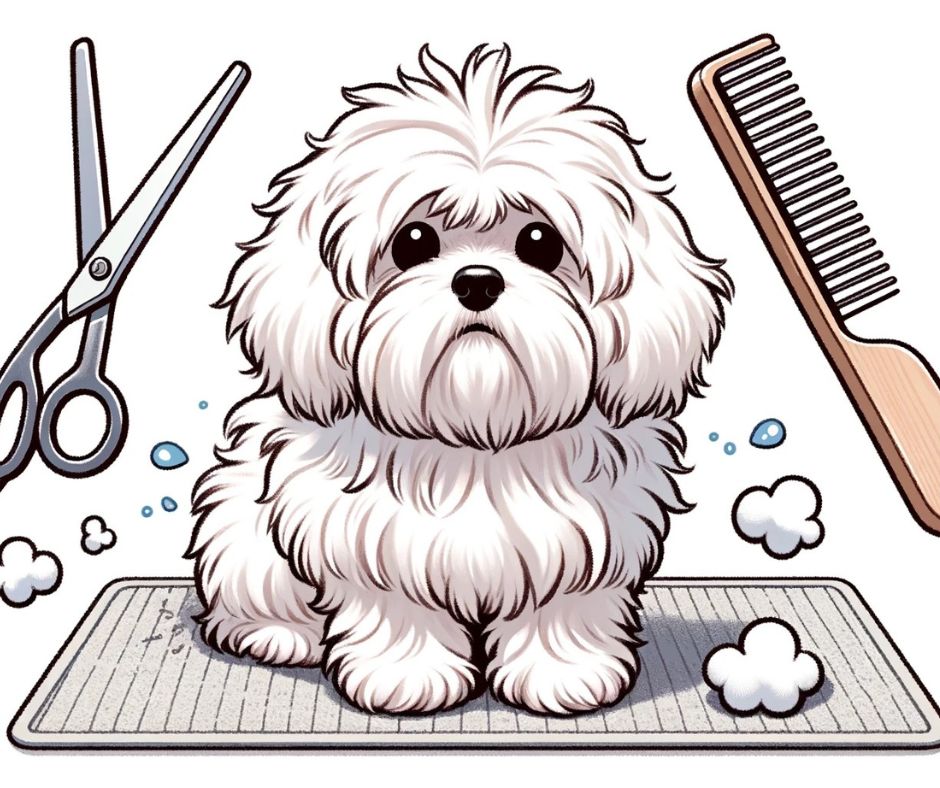
When brushing an anxious dog, it's important to be slow and use a gentle touch. Start by using a soft-bristled brush and working in short strokes. Use care with handling of sensitive areas and stop if your dog shows discomfort or anxiety. Gradually increase the time and frequency of brushing sessions as your dog becomes more comfortable.
Another helpful tip is to use treats or positive reinforcement during brushing sessions. This will help your dog associate grooming with positive experiences. You can also try distracting your dog with a favorite toy or treat to help them relax.
Bathing an anxious dog can be challenging, but you can do a few things to make the process easier:
- First, make sure you have all the necessary supplies within easy reach, including a non-slip mat, shampoo, and towels.
- Start by filling the tub with lukewarm water and placing your dog on the non-slip mat.
- Use a cup or handheld showerhead to wet your dog's coat, avoiding their face and ears.
- Apply a small amount of shampoo and work it into a lather, being careful not to get any in your dog's eyes or mouth.
- Rinse your dog thoroughly with lukewarm water, removing all the shampoo.
- Use towels to dry your dog off and avoid any sensitive areas. You can also use a blow dryer on a low setting, but keep it safe from your dog's skin.
- Remember to be patient and go at your dog's pace during grooming sessions.
Post-grooming Care
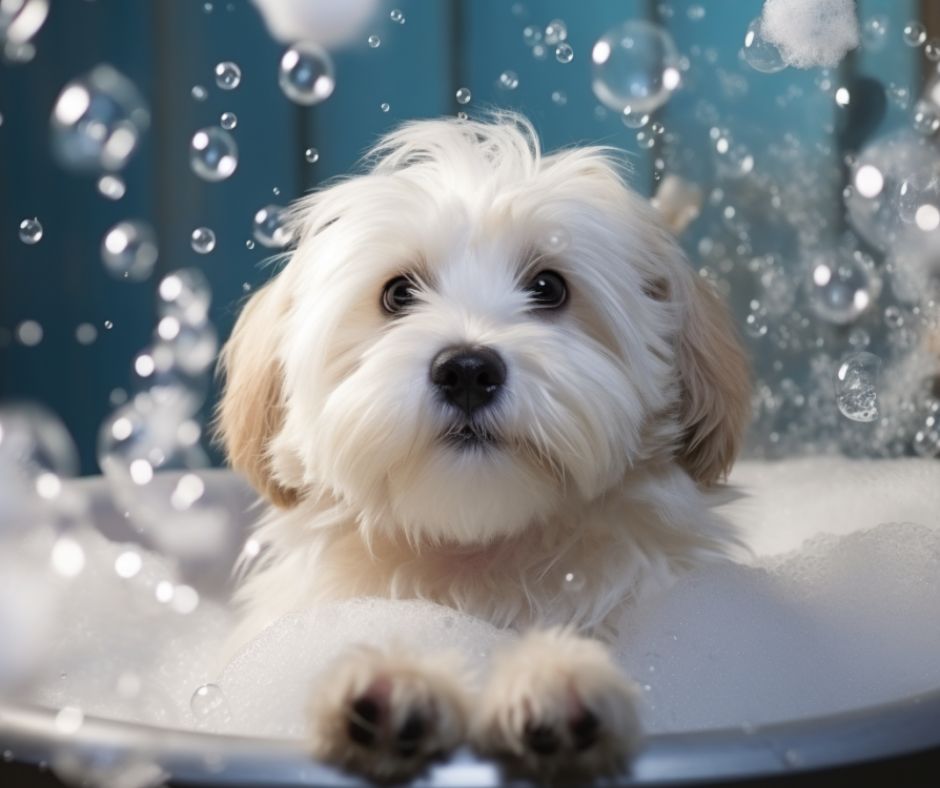
After grooming your anxious dog, there are a few things you can do to help them feel more comfortable and relaxed.
Here are some tips for post-grooming care:
- Reward your dog for being calm and cooperative during the grooming process. Give them a treat or a toy to play with after the grooming session to help them associate grooming with positive experiences. This can help reduce their anxiety during future grooming sessions.
- After grooming, check your dog's skin for any cuts or irritation. If you notice any redness or swelling, clean the area with a mild antiseptic and apply a soothing ointment. If the irritation persists, contact your veterinarian.
- Regular brushing can help keep your dog's coat healthy and shiny. Brush your dog daily to prevent matting and tangles. Use a brush appropriate for your dog's coat type, and be gentle when brushing around sensitive areas such as the face and ears.
- Maintain a regular grooming schedule. Grooming your anxious dog regularly is essential to keeping them healthy and happy. It can also help alleviate some of their anxiety by providing a sense of routine and stability.
- Schedule regular nail trimming and ear cleaning
Training Your Anxious Dog for Grooming
Preparing your dog for grooming involves two main methods of training: desensitization and counterconditioning.
Desensitization is a gradual process of getting your dog used to the grooming process and involves gradually introducing grooming tools and activities.
Here are some steps you can follow:
- Start by introducing your dog to the grooming tools one by one. For example, let them sniff the brush, comb, and nail clippers.
- Once your dog is comfortable with the tools, start touching them with the tools without actually grooming your dog. This will help your dog get used to the sensation of the tools on their skin.
- Gradually increase the duration and intensity of the grooming sessions. Start with short sessions and gradually increase the time you spend grooming your dog.
Counter conditioning is a process that involves changing your dog's emotional response to grooming. Creating a positive association with grooming is key.
Here are some steps you can follow:
- Start by associating grooming with positive experiences, such as treats or playtime.
- Gradually introduce grooming tools while providing positive reinforcement, such as treats or praise.
- Increase the duration and intensity of the grooming sessions while providing positive reinforcement.
You can learn more about these behavior modification techniques here.
10 Pro Tips for Grooming an Anxious Dog at Home
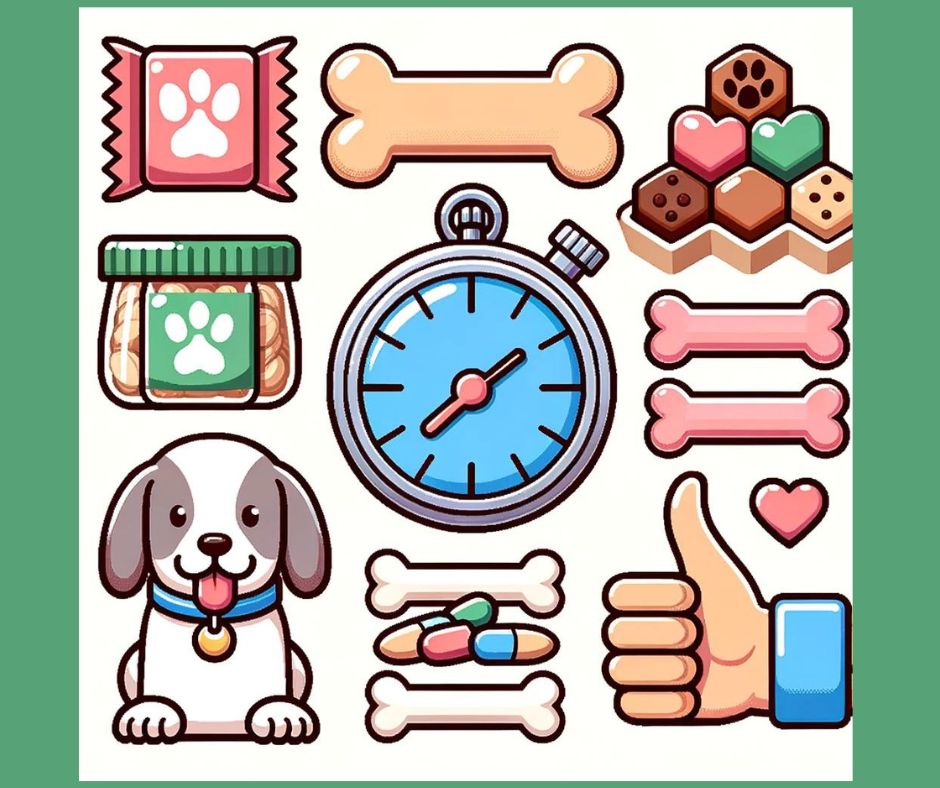
- Keep initial sessions short
- Use a lick mat with peanut butter or sweet potato to distract your dog during a bath
- Reward good behavior rather than comfort fearful behavior
- Start just touching or massaging your dog and praise him when he doesn’t resist.
- Let your dog sniff the brush and see it’s nothing to fear.
- Make sure you use a soft brush and try it on your own skin first – often, pets hate brushing simply because it hurts.
- At first, keep grooming sessions very short and always end on a positive note. It's always good to get your puppy used to being handled so grooming won't be an unusual or anxious experience. When your dog sits quietly and lets you brush him, reward him with the tone of your voice or a treat.
- Make sure to stop grooming if your pup starts showing signs of stress. You want him to associate being groomed with a positive experience, so NEVER scold or punish him when he doesn't cooperate.
- Be consistent and brush your dog every day, even if it's only for 30 seconds. Luc never had an issue with grooming, but Lucy was the worst! She thought we were playing and did everything she could to avoid or eat the brush or comb. Of course, everything is a game to a puppy. But the first thing I did every morning was sit with her and brush her hair for just a minute or two. She was a wiggly mess. But she has become used to this practice over time, and the groomer has noticed the difference.
- Bathing a nervous dog can be challenging if your dog is afraid of water. If your dog appears fearful, start slow with small steps. First, just put him in the tub with a toy, then get him a little wet with a washcloth, then a short bath, etc. Make it a fun experience with lots of praise and a big reward afterward (treat, toy, hug).
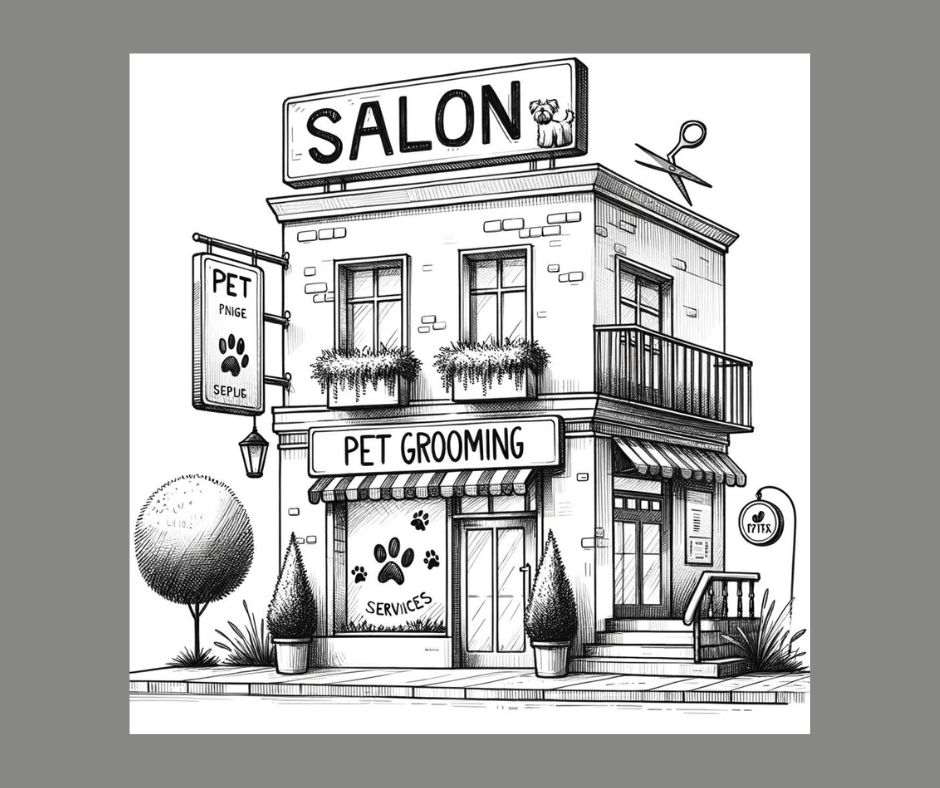
Grooming an Anxious Dog When Going to a Professional Groomer
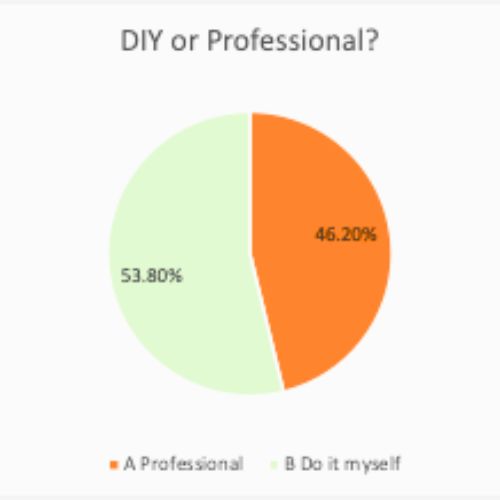
As you can see from this poll on our website, DIY grooming isn’t for everyone.
If your Coton will be going to a grooming salon, it's important to make an appointment as soon as your puppy has had all the necessary vaccines. Lucy had two new puppy appointments. These visits were solely to get her used to having a bath and being handled. Don't make their first groom appointment a long one with "the works." Build up to that.
Dogs get anxious when they go to a groomer because the environment is often cold, sterile, busy, and loud. That’s a lot for an anxious puppy to process.
Be aware that professional grooming can be an added stressor for your Coton dog since there are all kinds of additional stimuli, such as:
- Unfamiliar place and people
- Lots of unfamiliar dogs
- Being left by family
- Car rides to get to the salon can be stressful, especially if your dog gets motion sickness
- Strange, loud noises (blowers, salon doorbell, barking)
You must minimize your dog’s stress as much as possible. You can learn how to find a groomer for your anxious dog here, which includes tips on preparing your dog for the groomer to alleviate anxiety.
Home | About Me | Contact Me | Privacy Policy |Disclosure
Copyright© 2008- All Rights Reserved

